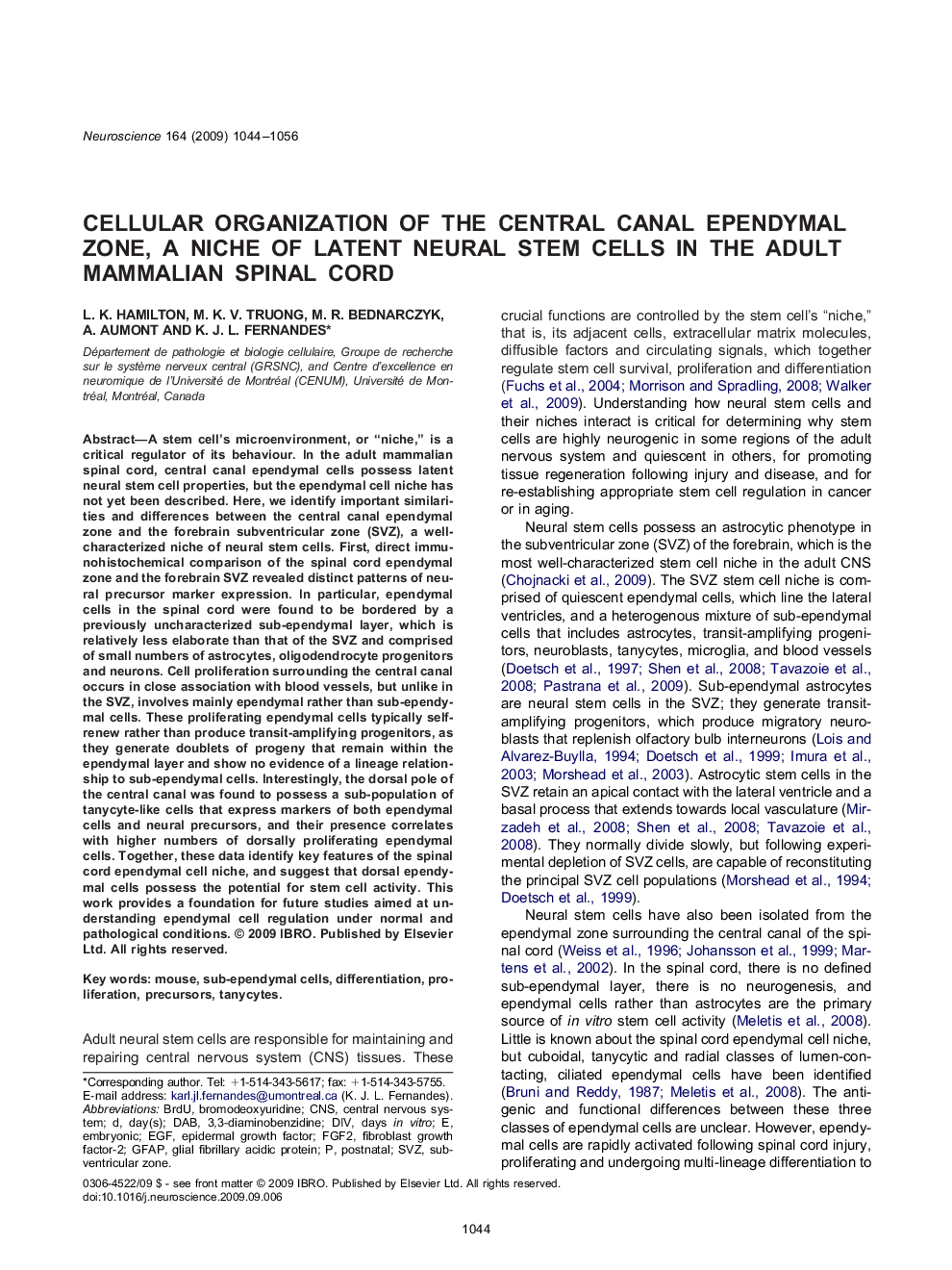| کد مقاله | کد نشریه | سال انتشار | مقاله انگلیسی | نسخه تمام متن |
|---|---|---|---|---|
| 6277471 | 1295759 | 2009 | 13 صفحه PDF | دانلود رایگان |

A stem cell's microenvironment, or “niche,” is a critical regulator of its behaviour. In the adult mammalian spinal cord, central canal ependymal cells possess latent neural stem cell properties, but the ependymal cell niche has not yet been described. Here, we identify important similarities and differences between the central canal ependymal zone and the forebrain subventricular zone (SVZ), a well-characterized niche of neural stem cells. First, direct immunohistochemical comparison of the spinal cord ependymal zone and the forebrain SVZ revealed distinct patterns of neural precursor marker expression. In particular, ependymal cells in the spinal cord were found to be bordered by a previously uncharacterized sub-ependymal layer, which is relatively less elaborate than that of the SVZ and comprised of small numbers of astrocytes, oligodendrocyte progenitors and neurons. Cell proliferation surrounding the central canal occurs in close association with blood vessels, but unlike in the SVZ, involves mainly ependymal rather than sub-ependymal cells. These proliferating ependymal cells typically self-renew rather than produce transit-amplifying progenitors, as they generate doublets of progeny that remain within the ependymal layer and show no evidence of a lineage relationship to sub-ependymal cells. Interestingly, the dorsal pole of the central canal was found to possess a sub-population of tanycyte-like cells that express markers of both ependymal cells and neural precursors, and their presence correlates with higher numbers of dorsally proliferating ependymal cells. Together, these data identify key features of the spinal cord ependymal cell niche, and suggest that dorsal ependymal cells possess the potential for stem cell activity. This work provides a foundation for future studies aimed at understanding ependymal cell regulation under normal and pathological conditions.
Journal: Neuroscience - Volume 164, Issue 3, 15 December 2009, Pages 1044-1056